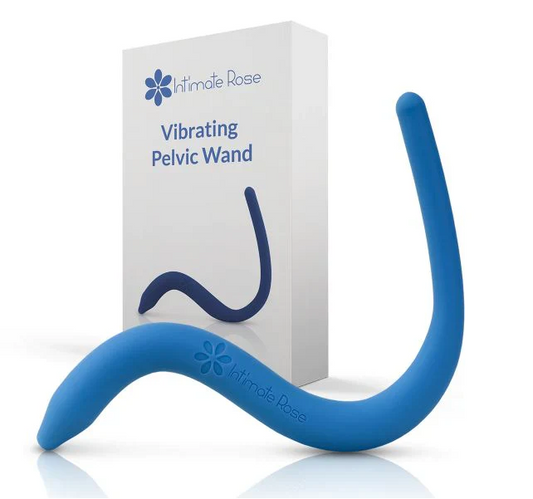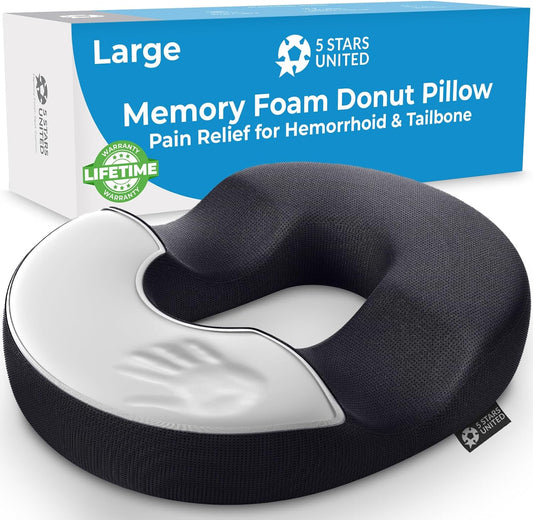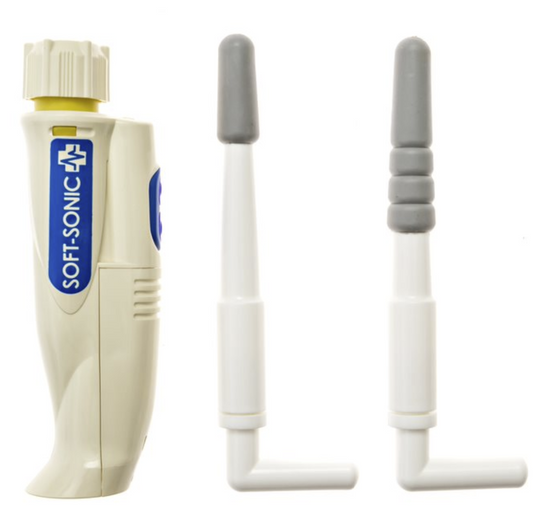
How to Do Kegel Exercises for Men (Pictures Included)
Share
According to an epidemiological study of men aged 45 to 99, the overall prevalence of urinary incontinence was 9.2%. Importantly, in men aged 90 or older, the rate reached 28.2%, and it increased linearly with age.
Despite how common these issues become over time, many men don’t realize that Kegel exercises offer a simple and effective way to improve bladder control and support pelvic health. While they’re often associated with women, Kegels are just as important for men and offer powerful benefits.
If you're on your journey to better prostate health, this guide will help you learn Kegel exercises with easy steps, clear pictures, and simple tips.
What Are Kegel Exercises?
Kegel exercises are targeted muscle contractions that strengthen your pelvic floor muscles. These muscles form a supportive hammock stretching from your pubic bone to your tailbone, controlling the flow of urine and helping maintain sexual function.
Named after Dr. Arnold Kegel who developed them in the 1940s, these exercises work by repeatedly contracting and relaxing the pelvic floor muscles.
This strengthens them just like any other muscle group in your body, leading to significant improvements in overall pelvic health.
Benefits of Kegel Exercises for Men
Strengthening your pelvic floor offers more than just better control, it can support key areas of men’s health, from bladder function to sexual performance.
Improve Bladder Control
Strong pelvic floor muscles act like a natural valve for your bladder. When these muscles are weak, you might experience leaking when you cough, sneeze, or laugh.
As a result, Kegel exercises train these muscles to respond quickly and effectively, giving you better control over urination.
Urologists often recommend Kegel exercises to people with overactive bladder, pelvic organ prolapse, and other urologic issues, such as incontinence (urine leakage).
Support Prostate Health
Your prostate gland sits directly above your pelvic floor muscles. When these muscles are strong and flexible, they improve blood flow to the prostate area. This enhanced circulation helps deliver nutrients and remove waste products more efficiently.
Regular Kegel exercises can help reduce prostate inflammation and may lower your risk of developing prostate problems.
Enhance Sexual Performance
Strong pelvic floor muscles play a direct role in sexual function. They help maintain erections by trapping blood in the penis and control ejaculation timing.
Kegel exercises can help address premature ejaculation and erectile dysfunction naturally. The improved blood flow and muscle control contribute to more satisfying sexual experiences for both partners.
How to Locate the Right Muscles
Finding your pelvic floor muscles is the first and most important step before starting Kegel exercises. While it may feel tricky at first, there are simple ways to locate the right muscles.
Here are a few simple ways to find your pelvic floor muscles:
- Start by trying to stop the flow of urine midstream. The muscles you use to do this are your pelvic floor muscles. Only do this once for identification, not as a regular exercise.
- Next, place your fingers on the area between your scrotum and anus. When you tighten the correct muscles, you should feel a gentle lift or tightening in that area.
- As you practice, focus on squeezing only the pelvic floor muscles. Keep your stomach, thighs, and buttocks relaxed so you're not engaging the wrong muscle groups.
Think of the movement as gently lifting and tightening from the inside, as if you’re pulling your pelvic organs upward. Make sure to keep the outer muscles relaxed while doing this.
Kegel Exercise Positions & Methods
The beauty of Kegel exercises lies in their versatility. You can perform them in various positions throughout your day. What's more, starting with the easiest position and gradually progressing to more challenging ones ensures steady improvement.
Lying Down Kegels
Lying down Kegels are perfect for beginners and men recovering from prostate surgery.
To perform this exercise, lie on your back with knees bent and feet flat on the floor, then contract your pelvic floor muscles while keeping your breathing steady. Hold the contraction for 3–5 seconds, rest for 5 seconds, and repeat 10 times.
This position is ideal when you're starting because gravity helps support your organs, making it easier to feel the correct muscle engagement.
It’s also perfect for men recovering from prostate surgery who need gentle rehabilitation.
Sitting Kegels
Once you've mastered the lying position, sitting Kegels are excellent for incorporating into your daily routine.
Begin by sitting upright with feet flat on the floor and spine in neutral position, then contract your pelvic floor muscles without leaning forward or backward. Hold for 5 seconds, rest, and repeat 10 times.
Office workers particularly love this position because it's discreet and convenient. In fact, you can do these exercises during meetings, at your desk, or while watching TV without anyone noticing.
Standing Kegels
As you build strength, standing Kegels offer the most advanced challenge for developing real-world functional control.
To do this, stand tall with feet hip-width apart and breathe normally while contracting your pelvic floor muscles. Hold for 10 seconds and repeat 10 times.
Standing Kegels are the most challenging because you're working against gravity. However, they're excellent for building functional strength that translates to real-world activities like walking, lifting, and sports.
Fast Flicks (Quick Contractions)
In addition to sustained contractions, fast flicks train your muscles for quick responses and improved sexual stamina.
To start, contract and release your pelvic floor muscles in rapid 1-second intervals, performing 10–20 quick pulses.
These quick contractions train your muscles to respond rapidly, which is particularly beneficial for preventing leaks during sudden movements like coughing or sneezing.
Moreover, they're essential for developing the reflexes needed for better ejaculatory control.
Mistakes to Avoid when Performing Kegel Exercises
Even small mistakes can reduce the effectiveness of your routine, so knowing what to avoid is just as important as knowing what to do.
Holding Your Breath
Many men unknowingly hold their breath while doing Kegels, which adds unnecessary tension and makes the exercises less effective.
To get the most benefit, focus on maintaining a steady, natural breathing pattern throughout each contraction. This helps your body stay relaxed and improves muscle control.
Clenching Buttocks or Thighs
Using the wrong muscles is a common mistake that can limit your results. Make sure your glutes and thighs stay relaxed, allowing only your pelvic floor muscles to do the work.
This targeted focus helps build strength more effectively and prevents unnecessary strain.
Overtraining or Skipping Rest
Like any other muscle group, your pelvic floor needs time to rest between sessions to avoid fatigue.
A good starting point is 3 sets of 10 repetitions, performed three times a day. Be sure to space these sessions at least 4–6 hours apart to allow for proper recovery.
Start with this basic routine and slowly increase the intensity as you get stronger. With regular practice, most men see noticeable results in 4 to 6 weeks, making the effort worthwhile over time.
If you notice discomfort, muscle soreness, or increased urinary urgency, these may be signs of overdoing it and a cue to scale back.
Only Doing One Method
Adding variety to your Kegel routine helps improve muscle control and prevents your body from getting too used to one pattern.
Try switching up positions and using different contraction styles to keep your pelvic floor muscles engaged and progressing
When Should You Expect Results from Kegel Exercises?
Most men begin noticing subtle improvements within 2-4 weeks of consistent practice. Significant changes typically occur after 6-8 weeks of regular exercise.
However, individual results vary based on your starting muscle strength and consistency.
Some of the early signs of improvement when you consistently do kegel exercises include better urine stream control and reduced urgency. Sexual benefits often become apparent after 8-12 weeks of dedicated practice.
When Kegels Might Not Be Enough
While Kegel exercises benefit most men, there are cases where professional help is necessary. If you experience symptoms like pain, tightness, or a burning sensation, it could indicate pelvic floor dysfunction rather than just muscle weakness.
If your symptoms don’t improve after 12 weeks of regular exercise, it’s a good idea to talk to a specialist. You can see a pelvic floor physical therapist, a urologist, or a men’s health doctor for more help.
These professionals can assess whether your pelvic floor muscles are too tight, too weak, or have coordination issues that require specialized treatment.
FAQs
Can I do Kegels after prostate surgery?
Yes, but start gently and follow your surgeon's recommendations. Most doctors encourage Kegels before and after prostate surgery to speed recovery and improve outcomes.
How do I know I'm doing Kegels correctly?
You should feel a lifting sensation in your pelvic area without tension in your buttocks, thighs, or abs. If you're unsure, consult a pelvic floor physical therapist for guidance.
Can Kegels help with erectile dysfunction or stamina?
Yes, stronger pelvic floor muscles can improve blood flow to the penis and help with ejaculatory control. However, ED has multiple causes, so consult your doctor for comprehensive treatment.
Enhance Your Kegel Routine with Professional Tools
For men serious about pelvic floor health, specialized tools can accelerate your progress and provide better feedback during exercises.
The Kegel Pelvic Floor Muscle Trainer for Men from Prostate Health Store Offers biofeedback and progressive resistance training. This device helps ensure you're targeting the right muscles while tracking your improvement over time.
Additionally, our Sonic Prostate Massager supports overall prostate wellness through therapeutic massage. This top-rated device promotes healthy blood flow and can complement your Kegel routine.
Order now and take control of your pelvic health with professional-grade tools designed specifically for men's wellness needs.




